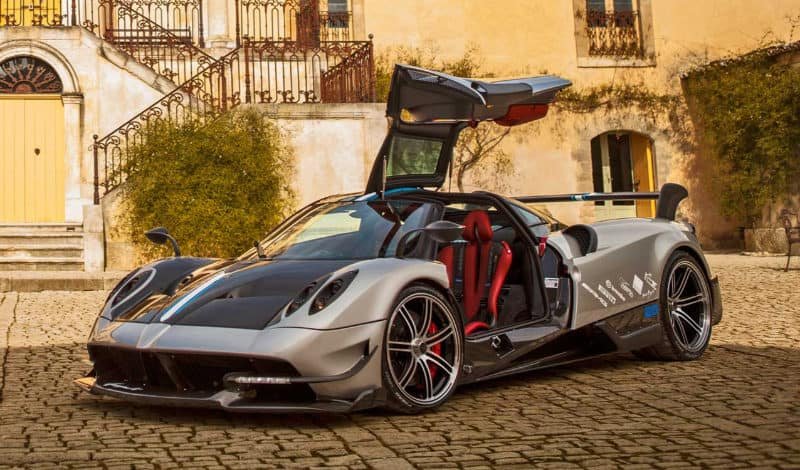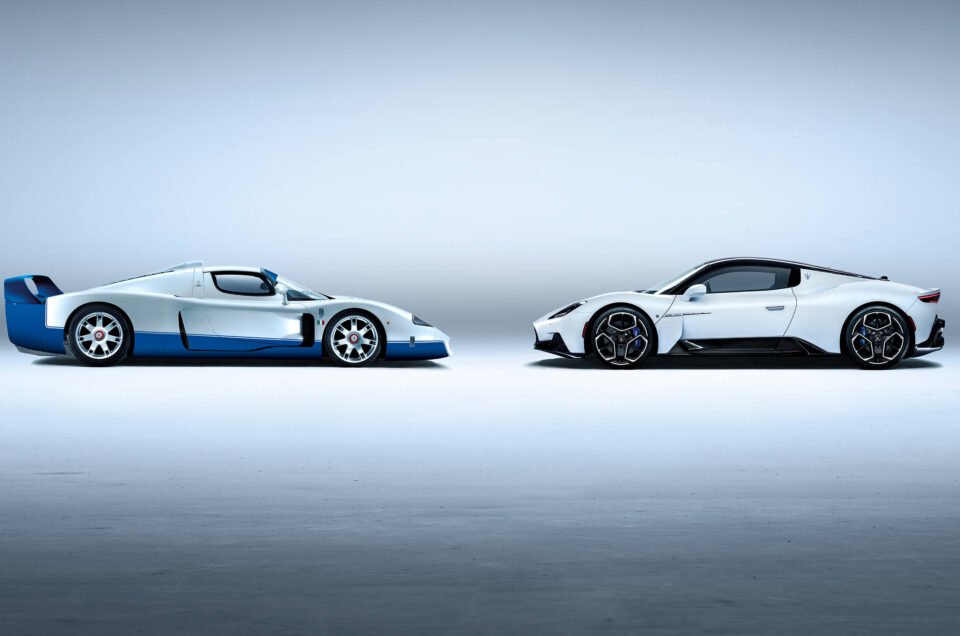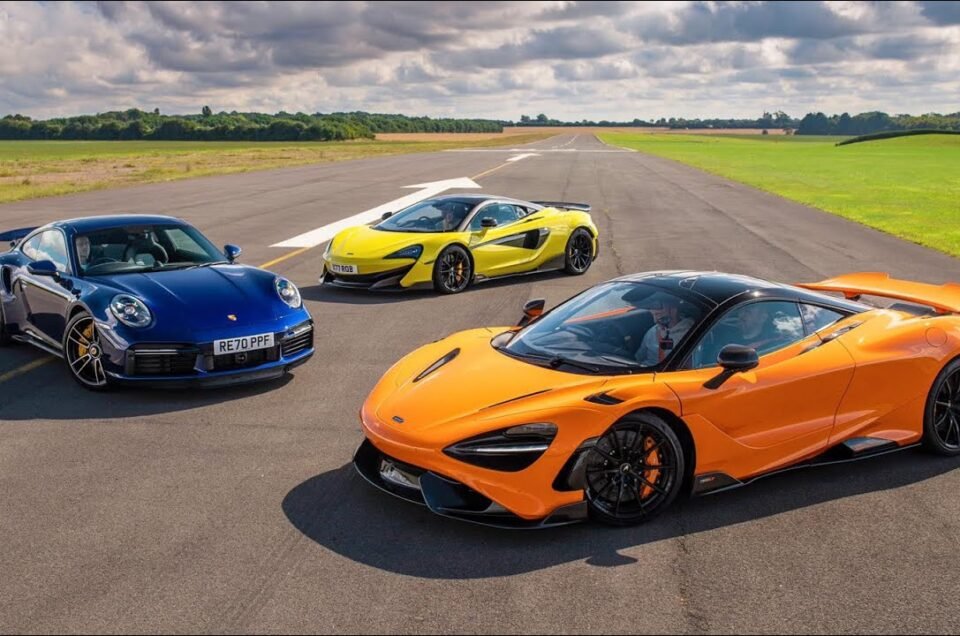Introduction to Bugatti and McLaren
In the realm of high-performance and luxury automobiles, Bugatti and McLaren stand as epitomes of engineering excellence and opulence. Both brands have carved out a distinguished niche in the automotive industry, each with a unique history and a range of groundbreaking milestones.
Bugatti, founded in 1909 by Italian-born French automotive designer Ettore Bugatti, quickly garnered a reputation for producing some of the most luxurious and performance-oriented cars ever made. The brand’s early models, characterized by their sleek designs and advanced engineering, set new benchmarks in the world of motor racing. Bugatti’s re-emergence in 1987 under the umbrella of Volkswagen Group revitalized its legendary status, leading to the creation of the iconic Bugatti Veyron and Chiron, both of which have set numerous speed records and epitomize luxury.
On the other hand, McLaren Automotive, established in 1985 as a spin-off of the McLaren Group, finds its roots in the high-octane world of Formula 1 racing. McLaren’s founder, Bruce McLaren, was a visionary in the automotive and racing industries, which is evident in the brand’s continuous push for innovation and speed. The release of the McLaren F1 in the 1990s marked a turning point, establishing the brand’s credibility in producing street-legal cars boasting unparalleled performance. More recently, vehicles like the McLaren P1 and 720S have further solidified McLaren’s commitment to marrying advanced technology with high-speed performance.
Both Bugatti and McLaren have remained at the forefront of automotive excellence, combining luxury with technology to produce vehicles that are as powerful as they are pristine. These brands are celebrated not only for their performance on the racetrack but also for their unrivaled craftsmanship, ensuring that only the finest materials and cutting-edge technologies are utilized in their creation. This positions Bugatti and McLaren as leaders in a highly competitive landscape, seamlessly blending heritage with innovation.
Performance Comparison
The ongoing debate between Bugatti and McLaren enthusiasts often hinges on performance metrics, as both manufacturers are renowned for pushing the boundaries of automotive engineering. When assessing the latest models from each brand, several key performance indicators stand out: horsepower, torque, acceleration times (0-60 mph), top speeds, and handling capabilities. These metrics collectively paint a detailed picture of how each car performs both on the track and in real-world driving scenarios.
In terms of horsepower, Bugatti’s latest model, the Chiron Super Sport 300+, boasts a staggering 1,578 hp. This immense power output is primarily derived from its quad-turbocharged 8.0-liter W16 engine, enabling it to excel in straight-line speed. By comparison, McLaren’s latest offering, the Speedtail, features a hybrid powertrain that produces 1,055 hp. While this is lower than the Chiron, McLaren’s focus on a lightweight design strategy ensures exceptional agility and dynamism.
Torque figures further underscore the performance differences between the two. The Bugatti Chiron generates a remarkable 1,180 lb-ft of torque, allowing for effortless acceleration. The McLaren Speedtail, while producing a lower torque figure of 848 lb-ft, optimizes its output through advanced aerodynamics and cutting-edge engineering.
Acceleration times reveal more about each car’s performance prowess: the Bugatti Chiron Super Sport 300+ accelerates from 0 to 60 mph in just 2.3 seconds, making it one of the fastest production cars on the market. Meanwhile, the McLaren Speedtail achieves this in a competitive 2.5 seconds, demonstrating its capability despite a focus on a different performance philosophy.
When it comes to top speeds, the Bugatti Chiron Super Sport 300+ has been clocked at an incredible 304 mph, pushing the limits of physics and engineering. In contrast, the McLaren Speedtail offers a top speed of 250 mph, sufficient for most hypercar enthusiasts though shy of Bugatti’s record-breaking number.
Handling is another crucial aspect of this comparison. Bugatti’s engineering ensures stability and control at high speeds, but McLaren’s renowned expertise in Formula 1 racing has been seamlessly integrated into the Speedtail. This results in superior handling and cornering capabilities, particularly evident on winding roads and racetracks.
In summary, both Bugatti and McLaren present extraordinary vehicles that dominate in different aspects of performance. While Bugatti leads with raw power and top speed, McLaren’s emphasis on agility and advanced hybrid technology provides a compelling alternative for performance car aficionados.
Design and Aesthetics
The design philosophies of Bugatti and McLaren are rooted in distinct traditions that reflect their unique histories and brand identities. Bugatti, known for its regal and opulent designs, employs curves and lines that exude sophistication and elegance. The marque’s flagship, the Chiron, is an epitome of this ethos. With its horseshoe-shaped grille and iconic C-line, the Chiron marries historical design elements with modern aerodynamics, resulting in a sculpted form that is both functional and visually arresting.
In contrast, McLaren’s design ethos is heavily inspired by its motorsport heritage and a commitment to cutting-edge technology. The McLaren 720S features a fluid, organic design that emphasizes aerodynamic efficiency. Its teardrop shape and dihedral doors not only enhance its futuristic aesthetic but also improve air flow, contributing significantly to its performance. The use of carbon fiber monocoque in McLaren’s construction underlines the brand’s dedication to lightweight and strength, further setting it apart in terms of design philosophy.
When it comes to interior design, Bugatti spares no expense in providing a sense of unparalleled luxury. The Chiron’s cabin is adorned with premium materials such as fine leather, polished metal, and carbon fiber, all meticulously crafted to provide an opulent and comfortable environment. Advanced infotainment systems and customizable seating options further enhance the luxury experience, making the Chiron as comfortable to sit in as it is thrilling to drive.
McLaren, on the other hand, adopts a much more minimalist approach. The interiors of models like the 720S focus on driver engagement and functionality. The use of high-quality materials is evident, though the emphasis is on ergonomic design and intuitive controls. The minimalist yet high-tech dashboard, with its digital display and tactile controls, reflects McLaren’s dedication to creating a driver-focused environment.
Ultimately, the design and aesthetics of Bugatti and McLaren reflect their unique philosophies and priorities. Bugatti emphasizes luxury and historical continuity, while McLaren prioritizes performance and technological innovation. Both approaches result in supercars that are as distinct on the inside as they are on the outside, offering unparalleled driving experiences each in their own right.
When assessing the technological innovations of Bugatti and McLaren, it becomes clear that both brands stand at the pinnacle of automotive engineering. These high-performance vehicles utilize advanced driver assistance systems, cutting-edge infotainment, and revolutionary aerodynamics to deliver an unparalleled driving experience.
Bugatti has consistently pushed the envelope with its integration of state-of-the-art technology. The marque’s vehicles often feature an extensive suite of driver assistance systems, including adaptive cruise control, lane-keeping assist, and advanced braking technologies. Bugatti has also excelled in the realm of infotainment, offering users a seamless blend of luxury and functionality through high-resolution displays, intuitive controls, and exceptional sound systems.
In terms of aerodynamics, Bugatti employs advanced computational fluid dynamics (CFD) and wind tunnel testing to optimize the design of its supercars. This ensures maximum stability and efficiency at high speeds. The use of lightweight yet durable materials like carbon fiber and titanium further enhances Bugatti’s engineering prowess, resulting in cars that are as robust as they are fast.
McLaren, on the other hand, is renowned for its relentless pursuit of technological excellence. The brand incorporates advanced driver assistance features, including dynamic stability control and telematics systems that provide real-time data for improved performance. McLaren’s infotainment systems are equally impressive, offering touch-screen interfaces and connectivity options that keep drivers both informed and engaged.
The aerodynamics of McLaren vehicles are meticulously refined through extensive use of CFD and practical testing. The brand’s innovations in active aerodynamics, such as the Airbrake system, adjust aerodynamic elements in real-time to optimize downforce and braking efficiency. McLaren’s dedication to using cutting-edge materials, like the ultra-lightweight carbon fiber Monocage chassis, further cements its position as an engineering leader in the automotive world.
What truly sets both brands apart are their proprietary technologies. Bugatti’s W16 engine is an engineering marvel, providing unmatched power and speed, while McLaren’s Proactive Chassis Control allows for unparalleled handling and stability. These groundbreaking innovations underscore the commitment both manufacturers have to pushing the boundaries of what is possible in the realm of high-performance cars.
Luxury and Comfort
When evaluating luxury and comfort, Bugatti and McLaren stand as titans in the automotive world, each offering a unique take on opulence and refinement. Bugatti vehicles are often the epitome of luxury, incorporating the finest materials such as hand-stitched leather, premium metals, and intricate craftsmanship that are synonymous with the brand. The company’s dedication to comfort is evident through its high-quality ergonomic seating that ensures an unparalleled driving experience, tailored to the driver and passenger’s needs.
In comparison, McLaren also demonstrates a commitment to luxury but with a focus on a more minimalistic and driver-centric approach. The interiors are characterized by high-grade materials such as Alcantara, carbon fiber, and leather, but the overall design is more streamlined and performance-oriented than Bugatti’s opulent cabins. McLaren’s seating is engineered towards maintaining a balance between comfort and support, ensuring that the driver stays connected to the car even during high-speed maneuvers.
Ride comfort in Bugatti models is augmented by advanced suspension systems designed to absorb road imperfections, delivering a smooth and serene journey. Noise levels within the cabin are meticulously controlled, offering a whisper-quiet environment despite the powerful engines. In contrast, McLaren’s approach to ride comfort focuses on harnessing the car’s handling prowess, with a suspension setup that caters more to performance without significantly compromising on comfort. The vehicle’s acoustics are engineered to allow the exhilarating sounds of the engine to reach the cabin, enhancing the overall driving experience.
When it comes to in-car amenities, Bugatti spares no expense. State-of-the-art infotainment systems, climate control, and customizable interior options create a personalized environment of sheer indulgence. McLaren, while equally impressive in terms of technology, focuses its amenities more towards enhancing driving performance rather than opulence, with advanced telemetry and driver assistance systems.
Customer reviews and expert opinions uniformly praise Bugatti for its unmatched luxury and comfort, making every journey a lavish experience. McLaren, meanwhile, garners acclaim for providing a balanced mix of luxury and performance, emphasizing a dynamic driving experience without forgoing the necessary comforts. Both brands, therefore, cater to different aspects of luxury, appealing to a wide range of automotive enthusiasts.
Price and Value Proposition
When contemplating the purchase of high-performance automobiles such as Bugatti and McLaren, the price and value proposition become pivotal considerations. Bugatti vehicles, renowned for their unparalleled engineering and craftsmanship, command an astronomical initial purchase price. For instance, the Bugatti Chiron, one of the brand’s flagship models, starts at a staggering $3 million. This significant outlay is partly justified by the brand’s exclusivity and superior performance capabilities.
In contrast, McLaren offers a somewhat more accessible entry point into the high-performance market. The McLaren 720S, a popular choice among enthusiasts, is priced around $300,000. While still within the realm of luxury, McLaren’s pricing strategy allows for broader accessibility while maintaining an impressive standard of performance and engineering excellence.
However, the cost of ownership extends beyond the initial purchase price. Bugatti’s maintenance costs are notoriously high due to the meticulous care required for their bespoke components. Routine service appointments can easily escalate into the tens of thousands of dollars, reflecting the complexity and rarity of Bugatti’s parts and the craftsmanship involved. On the other hand, McLaren, though not inexpensive to maintain, generally incurs lower maintenance and service costs when compared to Bugatti. This is due to a more streamlined approach to production and parts replacement.
The value proposition of each vehicle also warrants consideration. Bugatti’s exclusivity, limited production runs, and immense brand prestige contribute to a strong resale value. For collectors and aficionados, a Bugatti represents more than just a car; it is an investment and a status symbol. Meanwhile, McLaren balances exclusivity with a focus on performance and innovation, providing a compelling package for enthusiasts seeking both exhilaration and prestige in a more attainable format. McLaren’s resale value remains robust, bolstered by consistent demand and a reputation for cutting-edge technology.
Ultimately, the choice between Bugatti and McLaren hinges on the buyer’s priorities, budget, and appreciation for the distinct value each brand offers within the high-performance car market.
Track Record and Customer Satisfaction
When evaluating the track records of Bugatti and McLaren, several factors such as customer satisfaction, reliability, and after-sales service come into play. Bugatti, known for its premium high-performance cars, has established an admirable track record in customer satisfaction. Owners commonly praise the brand for its exceptional build quality and exhilarating driving experience.
In terms of reliability, Bugatti maintains a reputable stance. While high-performance vehicles generally require meticulous maintenance, Bugatti provides comprehensive warranty services that offer peace of mind to its owners. Common issues reported are relatively minimal, focusing more on the need for regular servicing rather than inherent flaws in the vehicles themselves.
McLaren, on the other hand, also enjoys a solid reputation amongst enthusiasts and customers alike. Renowned for its innovation and cutting-edge technology, McLaren vehicles boast high performance alongside commendable reliability. Customer reviews often highlight the brand’s commitment to delivering an immersive driving experience coupled with state-of-the-art engineering.
McLaren’s warranty services are comparable to those of Bugatti, providing extensive coverage that reassures customers of their investment. However, like Bugatti, McLaren vehicles do require diligent upkeep to maintain peak performance. Owners have noted some common issues, such as electronic glitches, which the brand has actively addressed through continuous improvements and updates.
When it comes to after-sales support, both brands excel in providing dedicated service. Bugatti’s after-sales service is frequently praised for its attentiveness and personalized approach, ensuring that any issues are swiftly and effectively resolved. Similarly, McLaren is known for its robust support network, with a focus on maintaining strong relationships with customers through excellent service and regular communication.
Overall, both Bugatti and McLaren demonstrate a commendable track record and high levels of customer satisfaction, although their strengths can vary slightly depending on individual experiences and specific models. Their commitment to exceptional service and reliability makes either brand a worthy choice for any discerning car enthusiast.
Final Verdict: Bugatti or McLaren?
When comparing Bugatti and McLaren, several key factors demand consideration: performance, luxury, value, and overall driving experience. Each brand has carved out a significant niche in the high-performance automotive market, offering distinct advantages tailored to different types of buyers.
Bugatti is synonymous with unparalleled luxury, craftsmanship, and exclusivity. The marque is renowned for producing hypercars that not only deliver breathtaking speed but also envelop the driver in opulence. Models like the Bugatti Chiron exemplify this ethos, boasting a 1,500-horsepower engine capable of mind-bending acceleration and a top speed that surpasses 260 mph. Bugatti’s attention to detail, use of premium materials, and bespoke customization options make it an ideal choice for those seeking the ultimate in luxury and presence.
On the other hand, McLaren focuses on cutting-edge performance and driving dynamics. Known for its technological innovation and racing pedigree, McLaren produces cars that excel on both the road and the track. The McLaren 720S, for example, offers a 710-horsepower engine, advanced aerodynamics, and a lightweight chassis that delivers exceptional agility and responsiveness. McLaren’s approach appeals to enthusiasts who prioritize driving engagement and engineering excellence.
For buyers prioritizing sheer performance and the prestige that accompanies owning an automotive masterpiece, Bugatti is the clear choice. Its cars are engineering marvels that define the pinnacle of luxury and speed, albeit at a significantly higher price point. Conversely, if a dynamic driving experience, cutting-edge technology, and value for performance are more important, McLaren offers an enticing proposition. Their models deliver exhilarating performance and advanced engineering at a more accessible price level than Bugatti’s elite offerings.
Ultimately, the decision between Bugatti and McLaren hinges on individual preferences. Luxury aficionados with a penchant for exclusivity will find their desires met in Bugatti, while driving enthusiasts seeking a visceral, high-performance experience are likely to be captivated by McLaren. Both brands offer unique attributes that cater to distinct tastes, ensuring that regardless of choice, one is guaranteed an extraordinary driving experience.







